Control Valve Flow Characteristics is the relationship between the percentage of valve opening on the flow rate. The choice was a control valve with flow feature that is important as well With a large selection of the appropriate valve.
For a device that serves to divide the flow features in each model. Trim is designed series of control valves. This will affect the rheological properties (flow. characteristics).
There are three most common control valve characteristics viz Linear, Equal % and Quick-Opening.
Linear Characteristics
A control valve is labelled LINEAR if its inherent flow characteristics can be represented by a straight line on a rectangular plot of flowrate F (or % F, or Cv or % Cv) versus % travel m (or Z for opening position) at the ideal condition of constant valve pressure drop (DPV).
Therefore equal increment of travel or opening m produce equal increment of flow F (or Cv) at constant valve pressure drop (DPV). If m represents travel and F represents flowrate, then dm = k dF, where k is a proportional constant.
Thus the valve gain or sensitivity, which is change in flow F divided by the change in travel m is constant, whether at low flow or high flow i.e. valve gain Kv = Df/dm = constant, independent of flowrate and valve opening.
Note also that the valve gain Kv is the slope (tangent) of the rectangular plot of flowrate F (Y-axis) versus valve travel or position m (X-axis). The slope remains constant and independent of flowrate throughout.
The flow rate can be varied with the percentage of opening of the control valve. 10% as the valve opens to allow the flow rate is 10%, 15% or more by opening the valves would cause the flow rate was increased to 15% as well, this is called Linear Characteristics.
Equal Percentage Characteristics
A control valve is said to be EQUAL % if equal increment of valve travel or opening m (or Z) produces equal PERCENT (%) increment in flow F. If this occurs at the ideal condition of constant valve pressure drop (DPV), the valve is said to be inherently EQUAL %.
Therefore dm = k1 (dF/F) x 100%
where k1 is a proportional constant.
Hence valve gain Kv = (dF/dm) = k1 F where k1 is a proportional constant.
Note that the valve gain Kv is not constant but increases as flow increases. Hence at low flow when the control valve is just opening, the valve gain is low and its flow change is insensitive.
At high flow at the upper portion of travel, the valve gain is high which means that the flow increases rapidly (sensitively) for the same increment in valve travel.
On a rectangular plot of flowrate F (Y-axis) versus valve travel or position m (X-axis), the slope is flattish near the initial travel position m (X-axis), but increases rapidly with flow as the valve opens at the upper portion of travel.
Quick Opening or Fast Opening Characteristics
The Quick-Opening characteristic control valve has a flat disk instead of a contoured valve plug. Its flow (or Cv) increase rapidly to its maximum flow with minimum initial valve opening. At the initial or lower portion of travel position, the valve gain Kv is too high for use in modulating control.
Thereafter, the slope is flattish, where the flowrate hardly increases with valve opening m. Therefore, such control valve is limited to ON-OFF service and application or in specific application which requires fast initial release or discharge of flow.
Modified Parabolic Characteristics
Other less common types of characteristics include the “modified parabolic” which is approximately mid-way between the Linear and Equal % characteristics, giving fine throttling action at low valve travel (like Equal %) and approximately linear characteristic for the upper portion of travel.
The so-called ‘hyperbolic’ characteristic rectangular plot is “bowed”, below the Linear characteristics. These two characteristics (Quick-Opening, modified parabolic) are mentioned here for interest sake only as the Linear and Equal % characteristics can meet almost all control requirement.
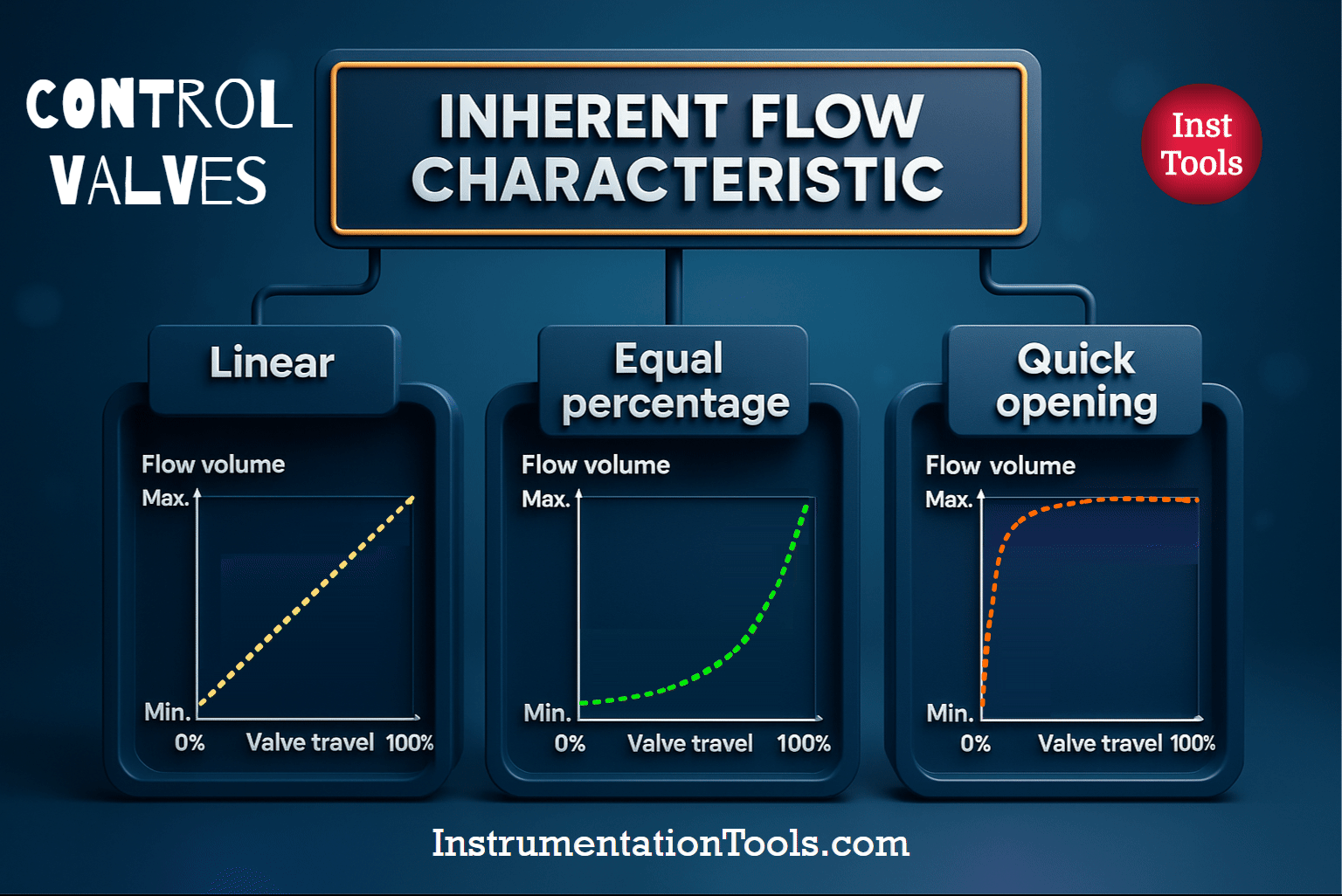
The characteristics graph is divided into two types.
Inherent Control Valve Flow Characteristics
The control valve Manufacturer can only state the Inherent valve characteristics, which refer to the flowrate, valve travel position relationship, when the pressure drop across the control valve is constant.
Note that the pressure drop across the control valve can be almost constant only if the piping system pressure drop is concentrated at the control valve and not distributed along the pipeline.
This means that the pipeline must be of very short length with minimum pressure-reducing-devices or equipment in series with the control valve.
Such a condition rarely exist in actual installation except in the control valve Manufacturer test facilities, where the control valve characteristics are obtained using very short length of piping.
Such ideal valve characteristics are the valve Inherent characteristics.
Installed Control Valve Flow Characteristics
The control valve Installed characteristics refer to the relationship between the volumetric flowrate through the valve AND the valve travel or opening position, as the valve is opened from its closed position to various degree of opening, when the pressure drop across the valve varies.
Note that the pressure drop across the valve varies in most actual installation, influenced also by various pressure-reducing devices in series with the control valve, such as the pipe length, pipe fittings and various types of valves, flowmeter and process equipment. In general, the pressure drop across these devices also vary with the flowrate squared.
Thus constant valve pressure drop rarely exists except in the ideal conditions of the Manufacturer’s test Lab. A control valve displays its Inherent characteristics at such ideal conditions. In actual plant installation, it displays the actual or Installed characteristics. The Installed valve characteristics can be very different from its Inherent or ideal characteristics.
The flow properties actually happens when we mount the valve into the pipe, filling in already. This chart looks at it will not match the Inherent Flow Characteristics.
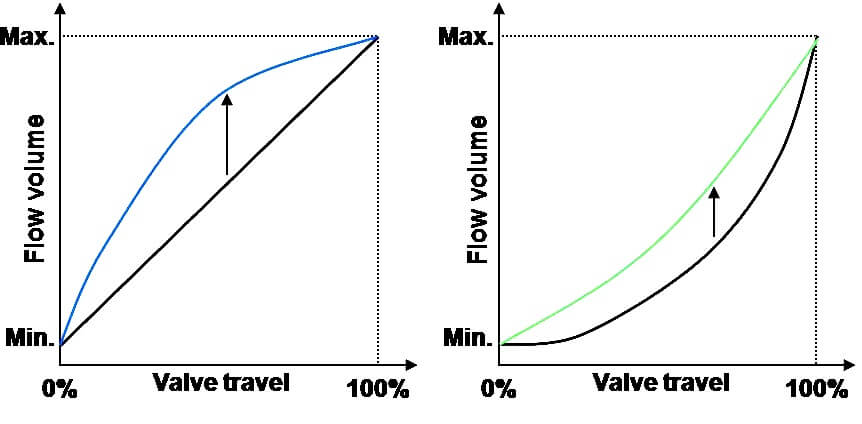
Read Next:
- Interview Questions on Valves
- Inherent vs Installed Valves
- Valve Trim Characteristics
- Different Valve Types
- Choked Flow of Control Valve
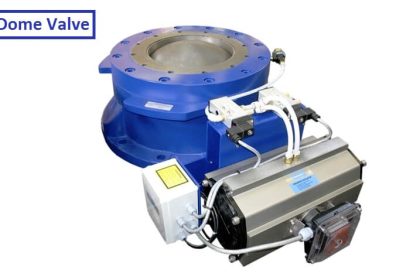
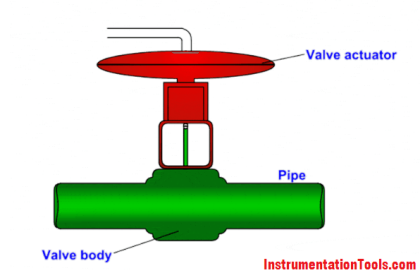

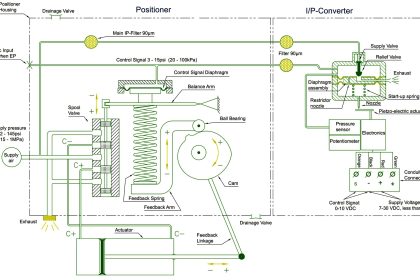



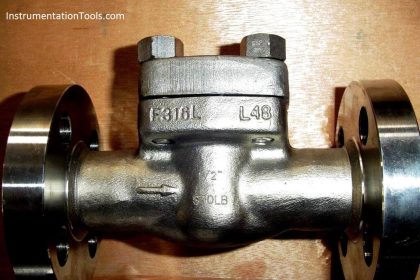
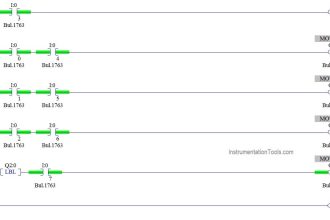

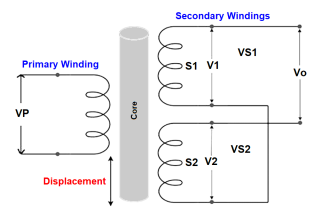
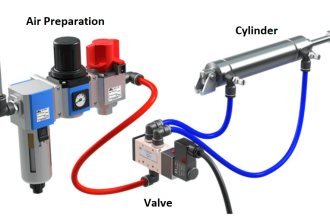
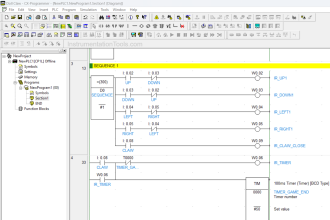
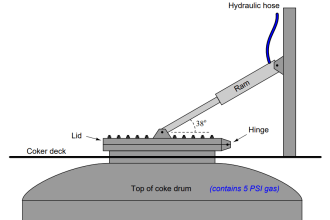

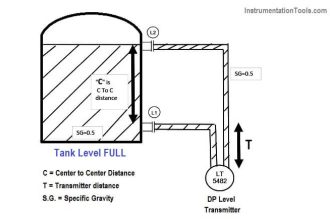

Good
very nice.. and good .